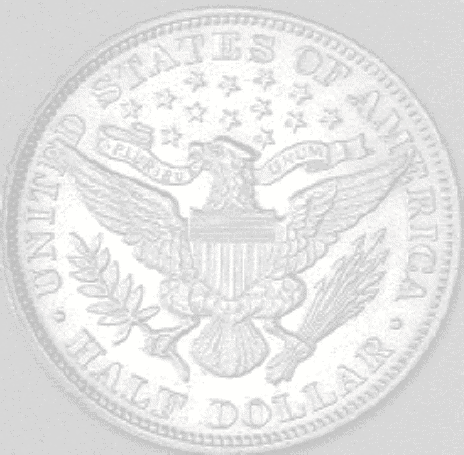
|
|
||
|
|
|
|
|
|
||

-55-
FOR BETTER OR WORSE:
The Agrarian Revolt
Between 1875 and 1877, hundreds
of mortgage companies were established in the Eastern states. Their
purpose was to find western borrowers of Eastern capital, and their
energy was spent in convincing farmers to borrow “money." Mr. Billington
states, "Agents roamed the prairie states in horse and buggy, pleading
with westerners to accept a loan” (732).
The frontiersman has been described as "materialistic,
mobile, versatile, inventive, wasteful, optimistic, and nationalistic”
(Billington, 752), and as such he fell a-lusting as agents declared
improved implements would increase profits. Every town saw itself as a
future blazing metropolis and borrowed huge sums to build waterworks,
schools, courthouses etc. While the Word of God warned, "The borrower is
servant to the lender,” (Proverbs 22:7), fifteen town in Kansas
installed street cars as agents counseled,
Don't be afraid to go into debt. Spend money for the city's betterment as free as water (and) let the increase of population and wealth take care of taxes (Billington, 733).
Then came the day of reckoning. The winter of 1886-1887 was so severe, many cattlemen were ruined. The summer of 1887 was so hot crops dried up. Those that did survive were devoured by chinch bugs. For 10 years, the plains states failed to reach the 20 inches rainfall needed to sustain crops (Billington, 733).
Farm Foreclosures
In Kansas and North Dakota
there existed a mortgage for every 2 persons. In Nebraska, South Dakota
and Minnesota, there was one for every 3 persons. One mortgage company
head confessed, "My desk was piled high each morning with hundreds of
letters each enclosing a draft and asking me to send a farm mortgage
from Kansas or Nebraska (Billington, 732). Between 1888 and 1892, half
the population of Kansas moved out, while 30,000 left South Dakota
during the same period of time. In 1891 alone 18,000 prairie schooners
entered Iowa from Nebraska (Billington, 733-34).
In Kansas, 11,000 farms were foreclosed between
1889-1893. By 1890, 25 percent of Kansas farmers were tenants or
sharecroppers. In Nebraska, 17 percent were such tenants. While in South
Dakota, they numbered 11 percent (Billington, 734).
Known as the "Agrarian Revolt," westerners formed their
own political parties. The People's Party, the Independent Party, the
Industrial Party, and the Alliance Party were formed, in what has been
described as "a religious revival, a crusade, a Pentecost of politics in
which a tongue of flame sat upon every man, and each spake as the Spirit
gave them utterance" (Billington, 738). It was the birth of the "Gospel
of Populism" (Billington, 739), and of the Populist Party.
Shakespeare counseled, "Neither borrower, nor
lender be!" Oh, the suffering men could spare themselves if they would
remember the words of Scripture, "The rich ruleth over the poor, and the
borrower is servant to the lender." (Proverbs 22:7)
______________________________________________
BIBLIOGRAPHY
Allen, Gary. "The Banker Conspiracy." Published in
The American Opinion. February 1985.
Billington, Ray Allen. Westward Expansion. Third Edition.
Copyright 1967. New York: The Macmillan
Company.
Chicago Democrat, The. September 27, 1857.
Foster, Rodgers, Bagin,. Nadler. Money and Banking. 4th Edition.
Copyright 1950. Prentiss-Hall, Inc.
Gilman, Theodore. The Banker's Magazine. February 1895.
Gouge, William. A Short History, of Paper Money and Banking in the
United States. Copyright 1835. New
York.
Griffin, Des. Fourth Reich of The Rich. Copyright
1983. South Pasadena, California: Emissary Publications.
Hammond, Bray. Banks and Politics in America from the Revolution to
the Civil War. Copyright 1957.
Princeton: Princeton University Press.
Hammond, Jabez. The History of Political Practice in the State of New York: The Ratification of the Federal
Constitution to December 1840. Vol. II. Copyright 1843. Albany.
Hepburn, A. Barton. A History, of Currency in the United States. Revised Edition. Copyright 1915. New
York: Macmillan Company.
Johnson, Roger T. Historical Beginnings -- The Federal Reserve. Edited by Mary Jane Coyle. Reprinted 1981
by Federal Reserve Bank of Boston.
Klise, Eugene. Money and Banking. Copyright 1955.
Cincinnati: Southwestern Publishing Company.
McCulloch, Hugh. Men and Measures of Half a Century. Copyright
1889.
Root, L. Carroll. "New York Bank Currency," published as a Tract by the
Sound Currency Committee of the
Reform Club. Copyright 1895. New York.
Scroggs, Willlam O. A Century of Banking Progress. First Edition. Copyright 1924. Garden City: Doubleday,
Page and Company.
White, Horace. Money and Banking. Copyright 1895. Boston: Ginn and Company.
